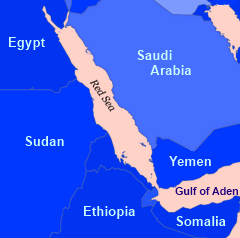CoralGeography
Where are Coral Reefs Found?
Coral Reefs are typically found in a band stretching from 30° north to 30° south of the equator where the water temperature stays above 68°F year round. Because the coral relies on its photosynthesizing symbiote, zooanthellae, for food, growth occurs in areas of shallow depth and low turbidity where sunlight can reach the coral. Water movement is also important to the health of coral reefs. Tidal shifts and waves wash away waste and bring nutrients and oxygen to corals.[1]
Specific Environmental Conditions
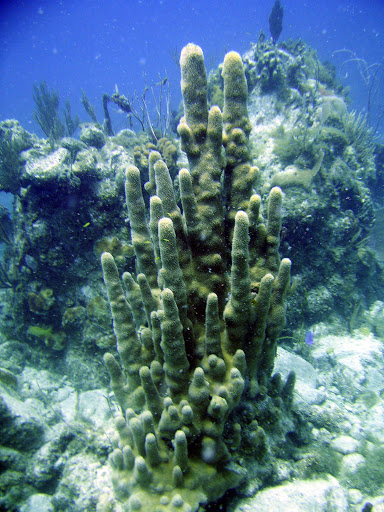
- Temperature
- Corals grow best in the warmer waters of the subtropics where temperatures remain between 68-83°F. Coral productivity is highest when temperatures are around 74-78°F.[1]
- Depth
- Because corals are reliant on their symbiosis with photosynthetic algae, they are restricted to shallow, sunlight waters. Depth can range up to several hundred feet in rare occasions but is normally restricted to the top 30-100 ft of the euphotic zone. [1]
- Emersion
- Most corals will die if they are exposed to open air and sunlight, but some species may survive short periods of time out of the water during extremely low tides.[1]
- Salinity
- Corals grow in normal ocean salinity, ideally 35-38 ppt.[1] However, some corals have been known to grow in the extreme salinities of the Red Sea, of up to 40 ppt.
- Turbidity
- Sediments causing high turbidity threaten coral survival by blocking sunlight and suffocating polyps. Corals prefer clear water where they can effectively feed and continue building. [1]
- Bottom Topography
- Corals need a hard, stable substrate to anchor to. Cyanobacteria (blue-green algae) must bind sediments in muddy or sandy bottoms to form a tough, leathery mat before coral can grow. [1]
Coral Reef Distribution
Because of the very specific circumstances required for coral reefs to form and flourish, it is not surprising that only 0.089% of the world's oceans are occupied by such formations. The majority of these reefs are confined to two geographic areas: the Caribbean and the Indo-Pacific, encompassing everything from the Red Sea to the Central Pacific. [2] The map below illustrates the distribution of coral reefs. Notice the relative absence of reef formations along the west coasts of the Americas and Africa. This is due to the upwelling of cold, nutrient rich water which discourages coral growth. [3]
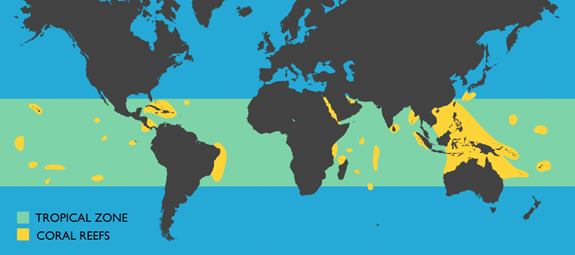
Reefs by Region
The coral reefs in the world can be grouped into three isolated regions: the Indo-Pacific, the Greater Caribbean, and the Red Sea. The gene flow between these three regions has been close to cut off (the Red Sea is connected to the Indian Ocean only by the Bab el-Mandeb strait) resulting in the development of a significant proportion of endemic (only existing in one place) species and unique regional diversity.[3]
Indo-Pacific
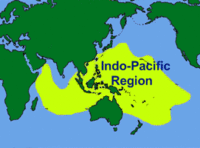
The Indo-Pacific is the largest of the three regions, encompassing the central and south pacific ocean from Hawaii and Japan down to Australia through the Indian Ocean to the east coast of Africa. All stages of fringing reefs, barrier reefs, and atolls are exhibited, but barrier reefs and atolls are the most common. Reef formations are composed mostly of hard corals and often develop prominent algal ridges on the seaward margin of the reef crest. On the shore side of the reef crest, an extensive reef flat may form. Of the three regions, the Indo-Pacific is the most biodiverse. It is home to 700 coral species and over 3,000 coral reef fishes. This biodiversity may be due to the size of the region and the abundance of coastline suitable for coral reef growth or the relatively mild effects of the Pleistocene ice age which wiped out many species from the Caribbean seas.[3]
Greater Caribbean
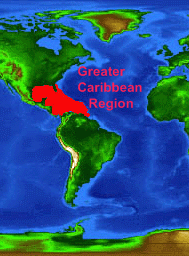
Red Sea
